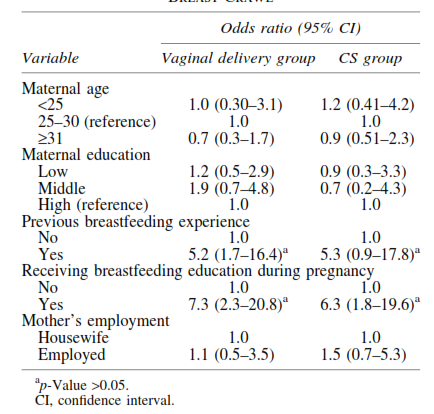
Sevil Hakimi
Tabriz University of medical science, Iran
Title: Comparison of breast crawl between infants delivered by vaginal delivery and cesarean section
Biography
Biography: Sevil Hakimi
Abstract
Background: Exclusive breastfeeding is the single most cost-effective intervention to reduce infant mortality. Breast crawl (BC) is deemed a natural way for the baby to behave immediately after delivery. BC is the method that may help initiation of breastfeeding in the most natural way. The aim of this study is to compare successful BC between neonates born through vaginal delivery and those born through cesarean section (CS) and factors associated with a positive outcome.
Methods: Participants were mothers who delivered their babies in Alzahra Hospital in Tabriz, through cesarean or vaginal delivery. The neonate was placed on the abdomen and mother’s chest so that the baby’s toes touched on symphysis pubis of mother after vaginal delivery, before expulsion of placenta. The infant was given 60 minutes to independently reach the nipple and take at least one suck. For mothers who had cesarean delivery, the neonate was placed on the mother’s abdomen immediately after the return from recovery room (15–20 minutes after expulsion of neonates), without washing. If the mother was unable to tolerate BC for more than 10 minutes, the midwife removed the baby from the mother’s chest. The criterion of successful BC in this study was for the baby to reach the nipple and have one or two effective sucking.
Results: Data show that babies delivered through vaginal delivery had signiï¬cantly more success in BC than babies born through the cesarean delivery (88.01% versus 11.21%). Moreover, babies in the CS group used signiï¬cantly less time to achieve BC (45 versus 28 minutes).
Conclusion: There is a remarkable difference in completion and length of time used to achieve BC between infants with regard to the delivery mode. Encouraging BC in all dyads, especially in cesarean births, may unduly delay the infant’s ï¬rst breastfeed

Table 1: Multivariate Analysis for Successful Breast Crawl

